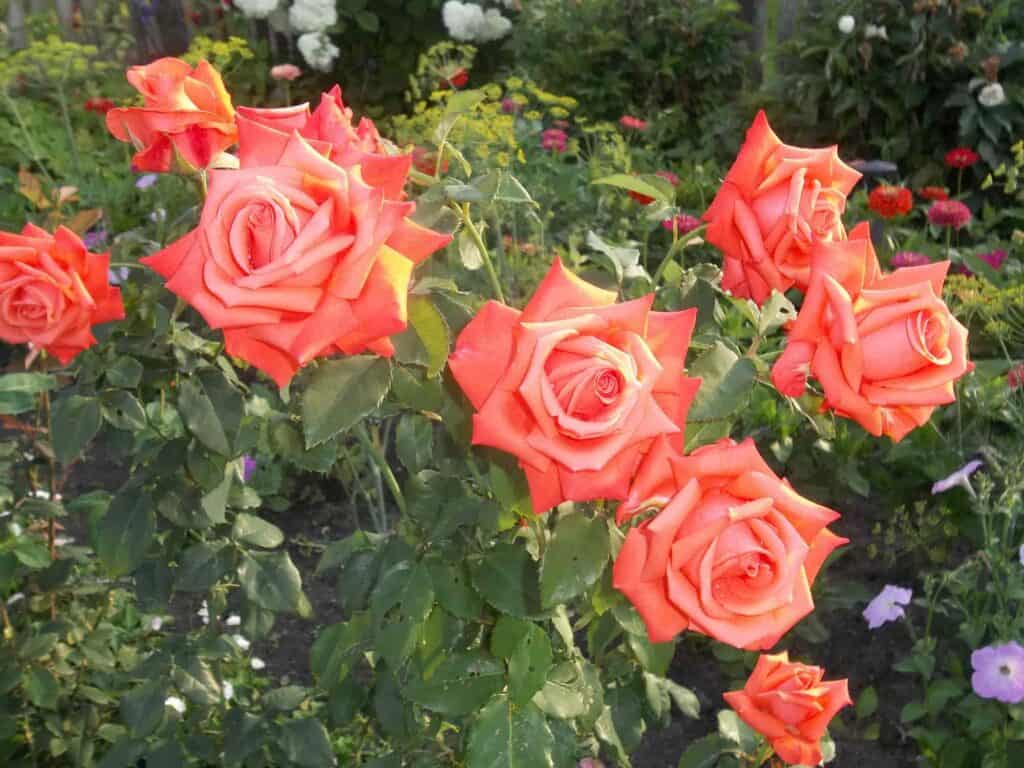Not all of our “Best” ornamentals come from the Orient; this beautiful native American rose is proof of that.
A native from Newfoundland to Virginia and westward to Missouri, this rose will grow almost anywhere if a reasonable amount of nutrients and moisture are in the soil.

When roses are mentioned, many gardeners think only of the hybrid teas and perennials, overlooking the natives, which require far less attention and frequently lend beauty to the garden for a considerably longer period. Such a rose is Rosa virginiana.
Sprayed Or Dusted For Disease
Virginia roses in the Arnold Arboretum seldom have to be sprayed or dusted for rose diseases or insect pests.
Although it may grow as high as 6’ feet, with a little trimming of the tops, it can be kept to 4’ feet, and trimming makes the plant much more dense and robust.
Rose Virginia’s Pink Flowers
The single pink flowers that appear in mid-June are over 2” inches in diameter. In addition, there is a white-flowered variety that is almost impossible to find in nursery catalogs, but it is hoped that it will become available soon.
The flowers of Virginia rose are usually borne in the greatest profusion and are followed by colorful small red fruits all fall and far into the winter.
Its Foliage During Winter
But this is not all! Each fall, the lustrous green foliage turns to brilliant orange—scarlet.
During the winter, the vigorous young twigs are red and colorful. Thus Virginia rose has an ornamental interest in the landscape every season of the year.
Grown As Single Specimen
Although this rose plant can be grown as a single specimen, the beauty of its flowers is surpassed by other roses. However, if grown in a mass or border, it becomes its own.
A word of caution must be given, for it spreads rapidly by underground stems in a situation where the soil is just right. However, if planted by a paved walk, it can easily be kept within bounds.
Sometimes it may be improved if cut to the ground with a brush scythe or sickle bar mower.
Our border is treated this way every few years, and if the cutting is done early in the spring before the leaves appear, the plants will have sufficient time to produce a few flowers that same year.
44659 by Donald Wyman
